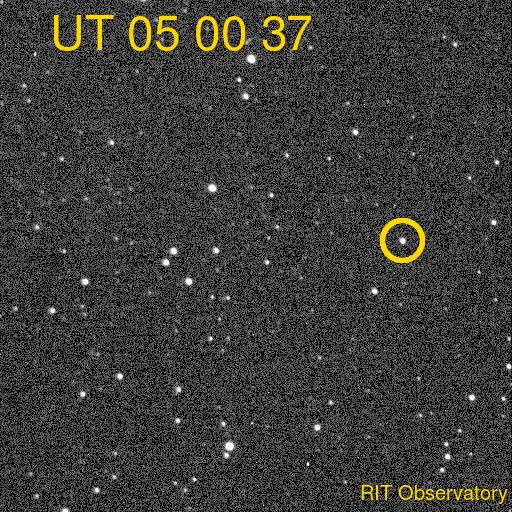
On the night of June 23/24, 2015, I observed the cataclysmic variable star V404 Cyg.
This time, I used a "V" filter, rather than the "I" filter used on two earlier nights. The star went crazy tonight, dropping by 3.5 magnitudes in an hour and a half, then recovering by 2 magnitudes in the next hour! Just look at it! (click on the image to start animation)
The main setup was:
Notes from the night
This object, originally noted as Nova Cyg 1938, is a Low-Mass X-ray Binary (LMXB) which is thought to consist of a black hole of roughly 10 solar masses and an ordinary star of about 0.6 solar masses. A good summary can be found at AAVSO Alert Notice 520 ; one paper from many, picked at random, is Characterizing the quiescent X-ray variability of the black hole low-mass X-ray binary V404 Cyg, which suggests that a jet is responsible for most of the radiation emitted during quiescence. The binary has an orbital period of about 6.47 days.
Here's a chart of the field of V404 Cyg, which is at
RA = 20 24 03.83 Dec = +33 52 02.2 (J2000)
The chart is about 12x12 arcminutes.
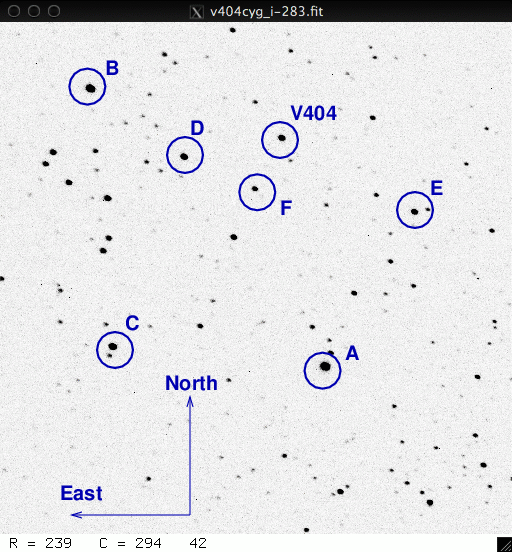
Among the labelled stars are
B TYC 2693-1473-1 F UCAC4 620-101865
The star "F" has a V magnitude of 12.815 +/- 0.014 according to AAVSO sequence 15094IVF, and an Ic magnitude of 11.967 +/- 0.018 according to AAVSO sequence 15088BFS,
Below is a graph showing the sky brightness as a function of time during the observing run. The smooth curve indicates lack of clouds.

Below is a graph showing the FWHM as a function of time during the observing run. I didn't refocus during this half-night.

Using aperture photometry with a radius of 4 pixels (radius of 5.7 arcsec), I measured the instrumental magnitudes of a number of reference stars and the target. Following the procedures outlined by Kent Honeycutt's article on inhomogeneous ensemble photometry, I used all stars available in each image to define a reference frame, and measured each star against this frame.
Sigma-vs-mag plot: V404 Cyg is the big, big, BIG outlier -- its standard deviation from the mean is almost 0.9 mag!
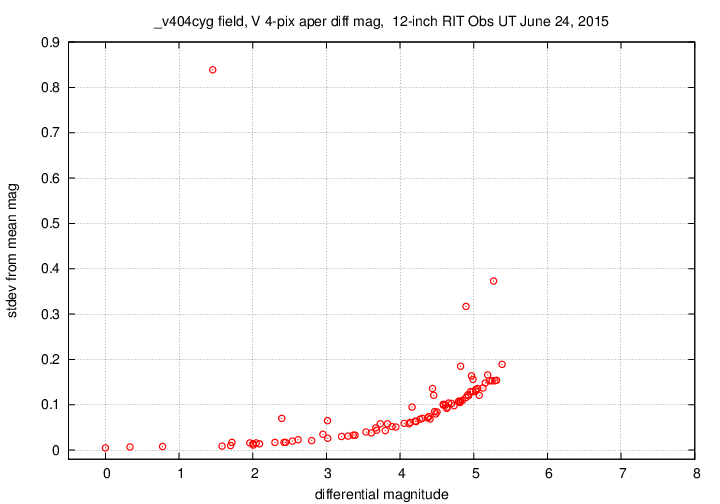
Image adjustment factor shows no evidence for clouds, and good guiding.
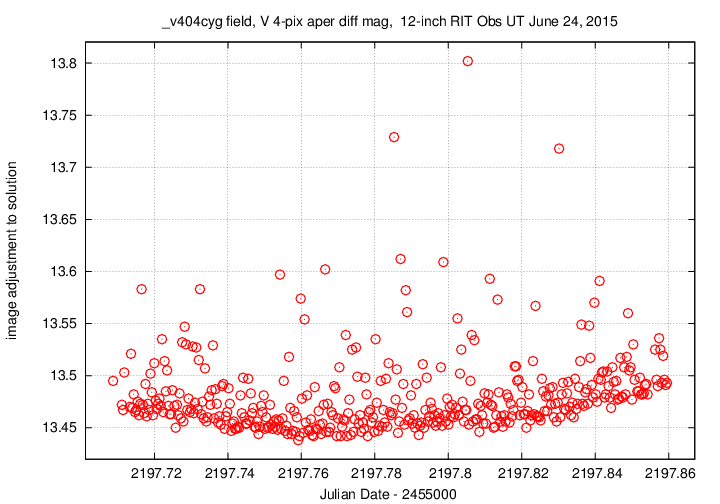
The target, shown in green, shows a crazy variation over the course of the run.
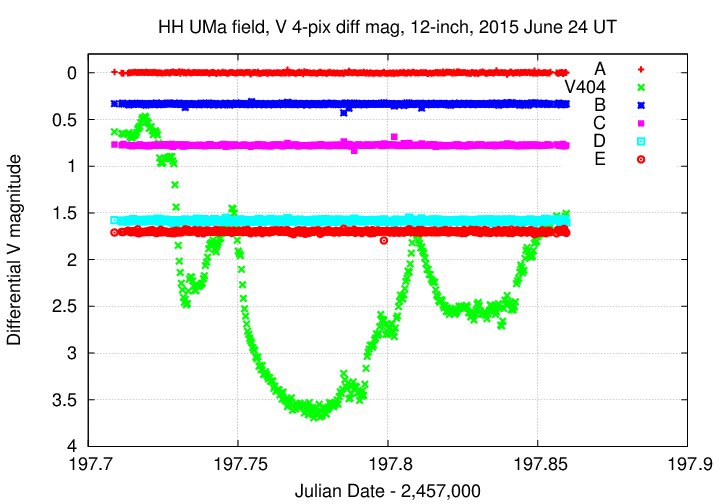
Here's a closeup of V404 Cyg by itself.
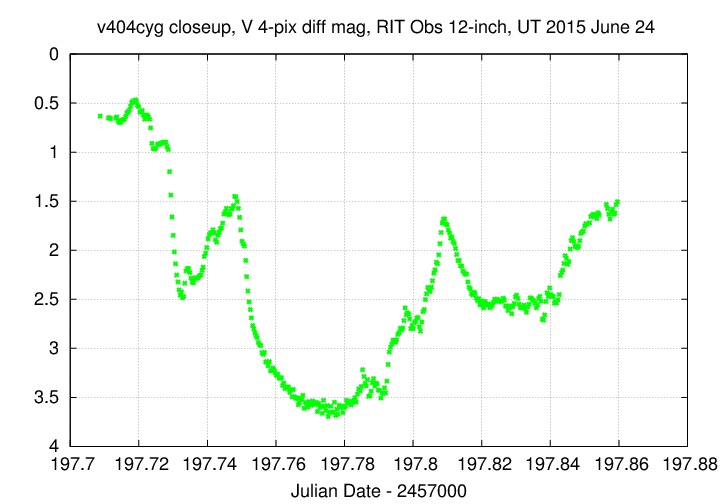
I used the AAVSO's value for the V-band magnitude of star "F" = UCAC4 620-101865 to shift the ensemble magnitudes to the standard V-band scale. You can download my measurements below. A copy of the header of the file is shown to explain the format.
# Measurements of V404_Cyg made at RIT Obs, Jun 24, 2015 UT, # in excellent conditions, # by Michael Richmond, using 12-inch Meade and SBIG ST-9E CCD. # Exposures 20 seconds long, V filter. # Tabulated times are midexposure (FITS header time - half exposure length) # and accurate only to +/- 1 second (??). # 'mag' is a differential magnitude based on ensemble photometry # using a circular aperture of radius 7.4 arcseconds. # which has been shifted so UCAC4 620-101865 has mag=12.815 # which is its V-band mag according to AAVSO chart 15094IVF. # # UT_day JD HJD mag uncert Jun24.20876 2457197.70876 2457197.71118 11.356 0.008 Jun24.21115 2457197.71115 2457197.71357 11.373 0.008 Jun24.21148 2457197.71148 2457197.71390 11.374 0.008
Last modified 6/24/2015 by MWR.